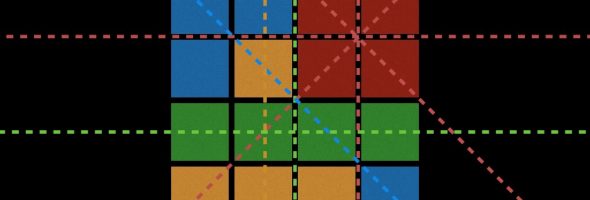Math Learning Object: Mathmagical Escape Room
Hailey Yan and Brie MacDonald

Target Grade Levels: 5 & 6
Mathmagical Escape Room_Teacher Package
Mathmagical Escape Room_Student Package
Inspiration:
For our Link2Practice observations on Wednesdays last term we were both in the same grade 6 class
at Spencer Middle School. The librarian at Spencer did a math and puzzle based Escape Room for
each class in the school over the course of a week. Each class went to the library for a block and
worked on puzzles in small groups. The students in our grade 6 class were all wild with anticipation
about getting to do the Escape Room. Afterwards they all expressed how much fun it had been. We
both thought this would be a great idea for a Math Object, especially as a resource that we can use
on our practicums, as both of us will be in the grade 4-6 range.
Introduction:
Our Math Object is an Mathmagical Escape Room with math based puzzles that involve collaboration
and communication of mathematical ideas. Students work in small groups on three different puzzles.
There is a final culminating puzzle that the whole class participates in. This activity can be done during
a single long math block, or over multiple blocks, depending on your students. This activity can also
be done using a story or riddle attached to it. See our story in the Student Package for an example.
We would introduce the Mathmagical Escape Room by reading out the story or riddle, and then go
over each of the three activities, giving full instructions with examples. Students would then be
separated into five different groups (determined by the teacher in advance in order to put students
into effective groups) and work through the problems. Groups can create their own team name.
When each team completes a puzzle they would bring it to the teachers to check for a correct
solution. There is a final whole class puzzle that reveals a surprise message, such as a field trip or
secret password for the story. See our object for descriptions of the puzzles and culminating activity.
Main Curricular Objectives: Problem solving, collaboration, communicating mathematical thinking,
geometry, measurement, and patterning.
Grade 5:
Curricular Competencies
● Develop, demonstrate, and apply mathematical understanding through play, inquiry, and
problem solving
● Develop and use multiple strategies to engage in problem solving
● Use mathematical vocabulary and language to contribute to mathematical discussions
Content
● addition and subtraction of whole numbers
● one-step equations with variables
Grade 6:
Curricular Competencies
● Develop, demonstrate, and apply mathematical understanding through play, inquiry, and
problem solving
● Use mathematical vocabulary and language to contribute to mathematical discussions
● Use reasoning and logic to explore, analyze, and apply mathematical ideas
Content
● One step equations with whole-number coefficients and solutions
Special Features:
● This is intended to be an end of year activity to support the curricular concepts mentioned
above.
● All these puzzles also include a variety of options for differential instruction, depending on
your student’s needs.
● The set-up of this escape room encourages collaboration within each group as well as the
whole class. Once a group has finished all three of their activities, they can split up and join
other groups in order to share their strategies. The activities are designed so that each group
has the same type of activity but each of their solutions are different.
● In the House of Mirrors puzzle, together a group can choose how much they want to challenge
themselves with the smallest house they can find being 4×4 with four different colours. Since
each group has to find a different House of Mirrors, by creating a larger house (e.g. 5×5 with
five different colours) it is less likely to find the same house as another group.
● The descriptors in the Venn Puzzler can be adapted to other content the class is covering,
which would also test the students’ understanding of that topic. Ideally, the teacher would
use a topic that the students are fairly comfortable with so that it does not hinder their ability
to figure out the math component and complete the puzzle.
How to Assess:
Completion!! “You escaped” – this suggests that students know the concepts well enough to complete
all the puzzles in the Mathmagical Escape Room. The teacher should also take observational notes
either during or after the activity of student’s collaboration and verbal thinking. The teacher can take
pictures of students during the activity so that students have the opportunity to explain what they
are doing/thinking in the photo. Student can later reflect on their experience and any challenges they
may have had (e.g. working with their group or with the puzzles themselves). This reflection could be
done either written or verbally in a follow up class. They can also add this activity to a Core
Competency portfolio they may be making and include pictures if the teacher took any.

